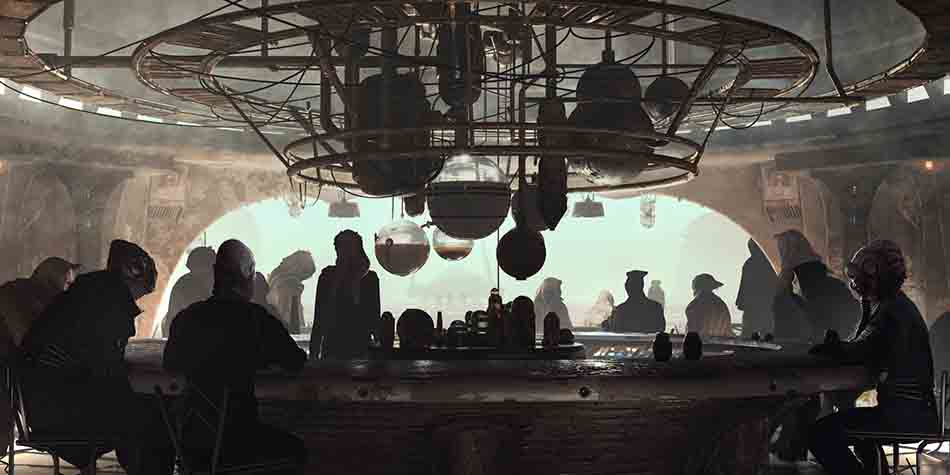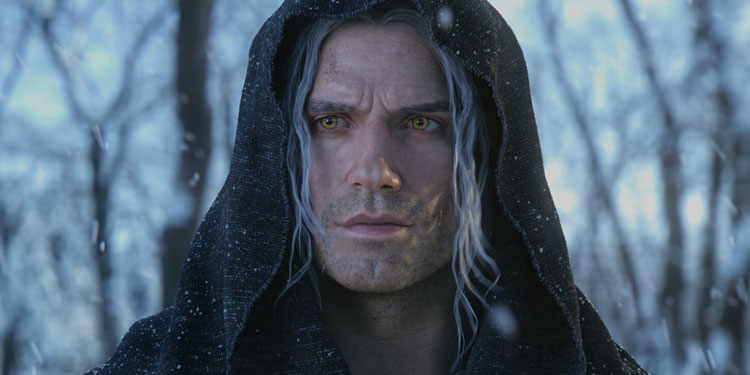Introduction
Embark on a haunting exploration of the digital abyss as we delve into the enigmatic world of Adam Spizak, a masterful 3D Artist.
Adam’s journey into digital art ignited in the fervor of the Amiga Demo Scene, has evolved into a captivating odyssey through the dark realms of regret and loneliness.
With influences ranging from classical sculptors to modern CGI illustrators, Adam’s unique style weaves a narrative that transcends the boundaries of surreal realism.
Based in London, his creations serve as poignant reflections of the shadows that linger within the human psyche.
Read about the Top 10 Countries for VFX Artists.
Background and Inspiration
Can you tell us a bit about your journey into digital art?
I started around 1997 with the Amiga Demo Scene, where people would create art on the Amiga computers. It was a great way to learn and connect with like-minded people. After that, I bought a pc and started to learn Photoshop, and slowly got into Cinema 3D around 2002.
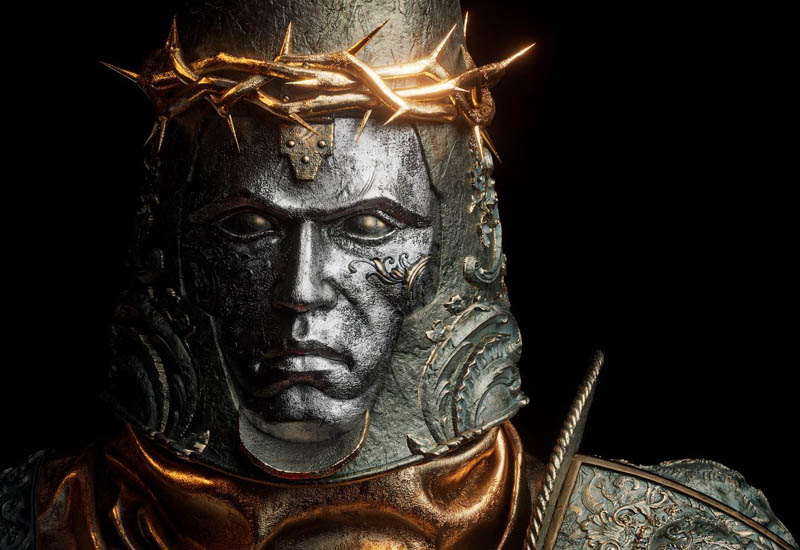
What inspired you to become a digital artist?
Early video games and early movies that had great CGI, like Flight of The Navigator. And games like Doom 2 and Diablo.
Who are some of your artistic influences and favorite artists (digital or otherwise)?
My fave artist for a long time has been Wayne Barlowe and the art of Beksinki. I also like classical sculptors.
Creative Process
Could you describe your typical creative process from ideation to completion?
Depending on the project, I start by making notes on ideas and saving refs and screenshots. After I usually start working on the core elements in 3D using ZBrush. Once the core model is done, I try to jump into C4D and start working on the composition. This step usually is where I use ZBrush, and C4D to keep working on making the idea the best it can be – I also still use refs/research to keep track of notes and build up the idea. This loop stops with the final production steps in AE/Photoshop.
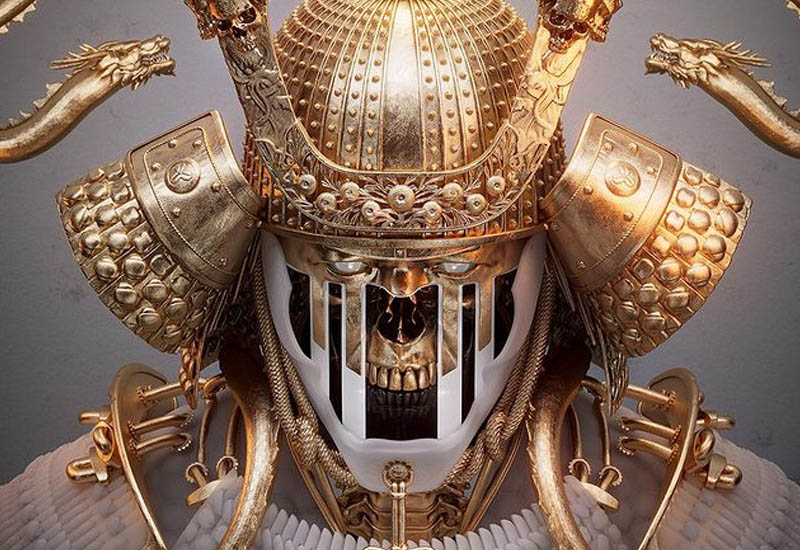
Do you have any favorite software, tools, or techniques that you rely on in your work?
Zbrush/C4D/Octane/AE/Photoshop. I also use PureRef and Evernote to keep notes and refs.
How do you stay motivated and overcome creative blocks?
Being organised, always saving notes, references. It prevents creative blocks from happening.
Style and Themes
Many digital artists have a unique style. How would you describe your artistic style and the themes you often explore in your work?
It’s probably tricky to see it in your own work, but I always think about my work as CGI Illustration with strong surreal realism influences.
Is there a recurring message or story you try to convey through your designs?
Probably regret and loneliness.
“Dante’s Inferno” Project
Let’s dive into your specific project. Can you share some details of Dante’s Inferno?
This is loosely inspired by a video game called Dante’s Inferno 2010. I have always liked that game and wanted to make something with the idea of remaking the main character.
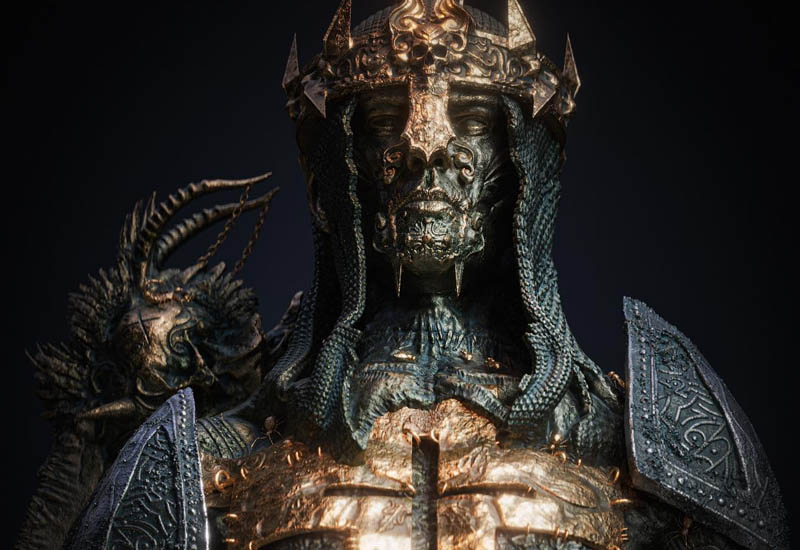
What is the story behind this project?
The game art was based on my fave artist Wayne Barlowe. Being a fan of his work and a fan of the game – I wanted to make a new version of this character but give it more physical feeling and horror vibes.
Can you describe the key elements and techniques used in this project?
Sure, all modeling work was made in ZBrush. I started from my base character model (male base mesh) and first worked on the crown. The crown is a signature element of this character, and I wanted to get it right.
Once that was in a good place, I worked on his facial details and looked to give him the correct expression. The scythe is his signature weapon, and in the game version, it is simpler. Here I wanted to give it a more gothic look and add skulls into the base of it, also making the blade more rough and less smooth looking as to make it rather nasty and unpleasant. (so it doesn’t look like something that cuts smoothly, more something that rips apart).
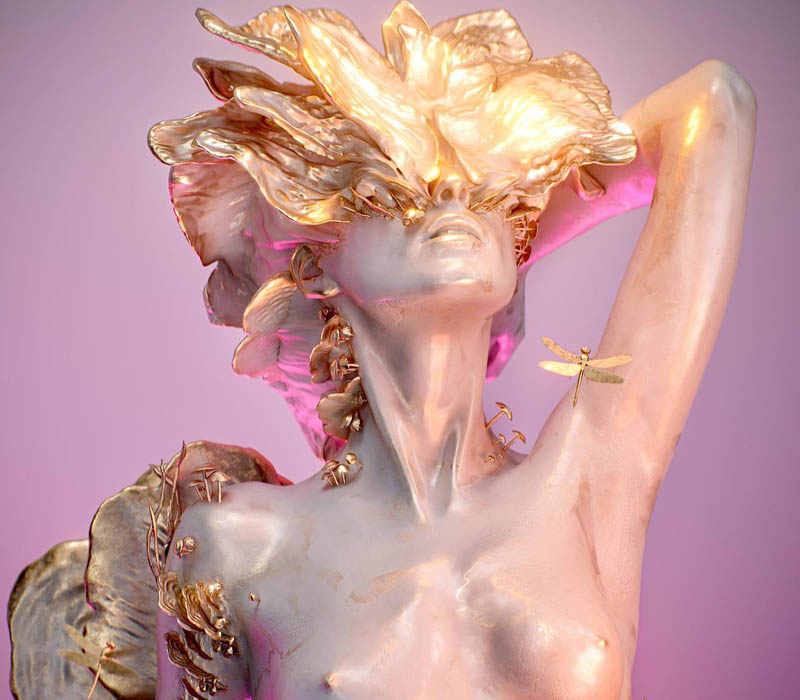
Other elements included another iconic element – the cross that’s sewn into his chest. Once all the models are in a good place – I usually do one more pass on adding extra details. The next step is to export it to Cinema 4D and use Octane to render it. This is where I do all of my texture/shaders and lighting work. After this step – the last step is post-production, usually in Photosop and/or AE.
Challenges and Achievements
Every artist faces challenges. Can you tell us about a specific artistic challenge you’ve overcome and how you did it?
Probably one challenge I face regularly is matching the vision for a project with the executions. Usually, it’s the true challenge – in making sure the work or a project is as good as I plan in my head. Managing my own expectations and also being ok with pushing my skills to match that.
What’s been one of your most significant achievements or milestones in your artistic journey?
Probably being able to design and make art for over 20y for a living.
Advice for Aspiring Artists
What advice do you have for aspiring digital artists just starting their creative journey?
Research, read, watch, listen to others. Don’t just ask questions. A big part of a great digital designer is knowing how to find information without asking others. It may sound odd – but working with many designers, I see reg how many don’t have a good “research” skill. Being good at finding information will make your projects a lot less stressful, you will get stuck less and have better ideas. This is also important when working in teams/collab with others as you don’t want to come across as someone who takes others’ time asking.
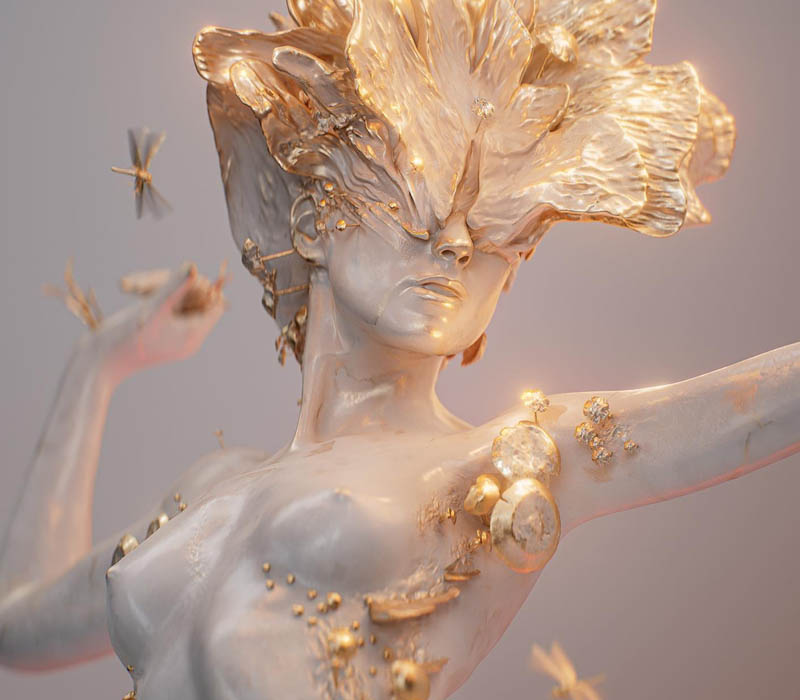
How do you balance your artistic pursuits with other aspects of life, like work and family?
My work/art are rather aligned and my mantra is: does the client like it. This is what’s important to pay bills with your work. Being organized is important as it helps with adding structure to your day. Outside of my work-time – I try to spend time with my dogs, gym and play videogames to have a good counterbalance.
Future Goals
What are your future artistic goals, or is there a particular project or theme you’d like to explore in the future?
Not set in stone, I do want to make more video-games art. I’m also building my own character universe (that Dante is part of) called “The Borders of Hell”, so want to continue on that.
Do you have any upcoming exhibitions, collaborations, or projects you’d like to share with your audience?
Working on some great poster collabs, but it’s too early to say! 🙂
Conclusion
Adam Spizak’s artistic odyssey is a captivating fusion of dark surrealism, delving into profound themes of regret and loneliness. Influenced by the works of Wayne Barlowe and Beksinski, Adam’s CGI illustrations masterfully blend haunting realism with surreal elements, creating an emotional resonance within his art.
From his project “Dante’s Inferno” to his disciplined creative process, Adam invites viewers on a journey through intricate and emotive digital landscapes.
As he envisions a future exploring video game art and expanding his character universe, “The Borders of Hell,” Adam’s artistic trajectory promises a continued exploration of enigmatic and compelling narratives. Explore Adam’s hauntingly beautiful digital portfolio on his website at www.spizak.com. Follow him on Instagram for captivating visuals and connect on Twitter for the latest updates. Immerse yourself in the shadows of Adam Spizak’s artistic narrative across these platforms.
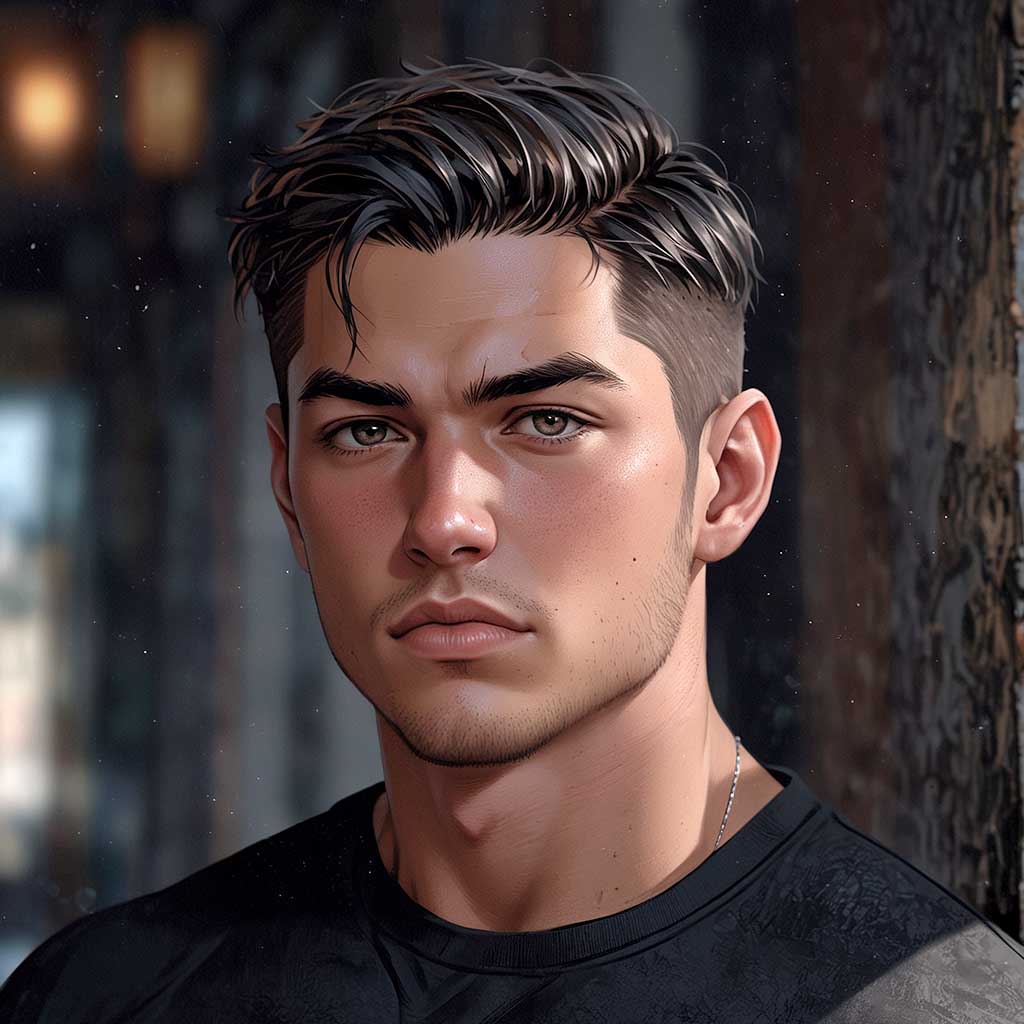
Nyx, Editor at Vertex Mode, is also an experienced 3D Artist in gaming and film, sharing insights on Digital Art and its creators.
